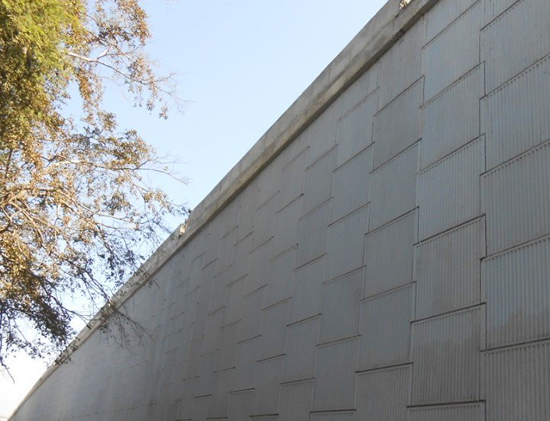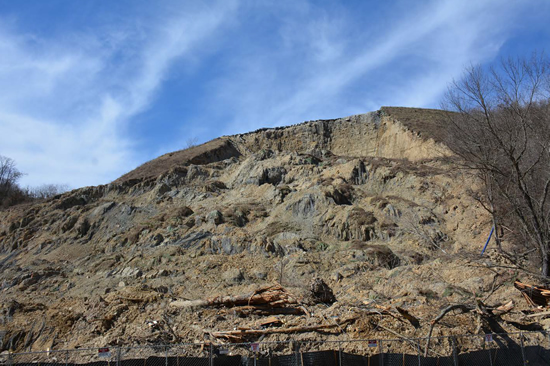
 The innovative performance of geosynthetic reinforcement materials has led to mechanically stabilized earth walls and slopes becoming a mainstay of modern infrastructure—particularly with highways and commercial development. However, agreement is not so easy to find on the design framework best suited to consistent long-term performance and safe engineering and construction. Failures are rare, but when they occur they raise unique questions.
The innovative performance of geosynthetic reinforcement materials has led to mechanically stabilized earth walls and slopes becoming a mainstay of modern infrastructure—particularly with highways and commercial development. However, agreement is not so easy to find on the design framework best suited to consistent long-term performance and safe engineering and construction. Failures are rare, but when they occur they raise unique questions.
For example, data suggests that MSE structures are in general overly conservative in their design—at least from the perspective of typical conditions. Atypical events (e.g., heavy precipitation, earthquakes, etc.) can reveal risks that some frameworks have not properly accounted for. Or, a construction practice that actually exposes a wall to failure risk may not be apparent in the system until well after construction has been completed.
Late last year, the US Federal Highway Administration published a 132-page document that is worth a read for geotechnical professionals working with reinforcement: Limit Equilibrium Design Framework for MSE Structures with Extensible Reinforcement.
LIMIT EQUILIBRIUM, K-STIFFNESS, AND AASHTO/FHWA
As previously noted on Geosynthetica, this is a topic that will be presented and debated at the TC – Geosynthetics working committee meeting on March 14 in Orlando, Florida during the Geotechnical Frontiers 2017 conference. There, four engineers will present three major design frameworks, with 30 minutes given to each presentation followed by 30 minutes of discussion on that framework. The schedule will be as follows:
- Introdution by Dr. Jorge Zornberg (Immediate Past President, International Geosynthetics Society)
- Richard Bathurst (Queen’s University, Canada and Royal Military College) on Simplified K-Stiffness Framework
- Discussion on Simplified K-Stiffness Framework by TC-Geosynthetics
- Dov Leshchinsky (University of Delaware) Limit Equilibrium Design Framework by TC-Geosynthetics
- Discussion on Limit Equilibrium Design Framework
- Barry Christopher (Consultant) and Tony Allen (Washington DOT) AASHTO/FHWA Framework
- Discussion of AASHTO/FHWA Framework by TC-Geosynthetics
- Closing Thoughts and Actions
FHWA’S DOCUMENT
In laying out the reasons for publishing the FHWA document on limit equilibrium, the authors note:
Sound geotechnical design needs to look at conditions which are likely to occur during the lifespan of the structure. Under these conditions the structure should be in static equilibrium. Limit equilibrium, LE, is one of several methods of analysis that can be used to assess limit state.
It is noted that limit state failure in MSE structures is not a hypothetical situation; it has happened…. The tradition of assessing stability of geotechnical structures while considering feasible long-term conditions is clearly needed when designing MSE structures.
Returning to this later in the document, they write:
Current design of reinforced earth structures in the US distinguishes between slopes and walls using the batter angle as a criterion. Batter ≤20° is defined as a reinforced wall and batter >20° is defined as a reinforced slope. Different design-oriented analyses are used for walls and slopes, generally leading to significantly different outcomes. Such distinction simplifies the design of walls by virtue of using a synergy of simple analyses that are tangible and metaphorically, except for global stability, can be done ‘on-the-back-of-the-envelope-calculations’. While the semi-empirical approach to walls results in safe structures, it is not consistent with traditional and well-established geotechnical design of similar structures; i.e., slopes. Reinforced slopes and walls can be considered as a subset of slope stability problems where man-made reinforced soil slopes are constructed over foundation soil. Slope inclination (or batter) is just a typical design variable which is not an artifact of convenience of calculations. Using a unified approach in limit state design of reinforced ‘walls’ and ‘slopes’ should diminish confusion. It should enable a consistent approach to solving various geotechnical problems such as complex geometries and non-uniform soil profiles.
Download a copy of the Limit Equilibrium Design Framework document (PDF)
Learn more about the Geo-Institute meeting on MSE design frameworks during Geotechnical Frontiers 2017











